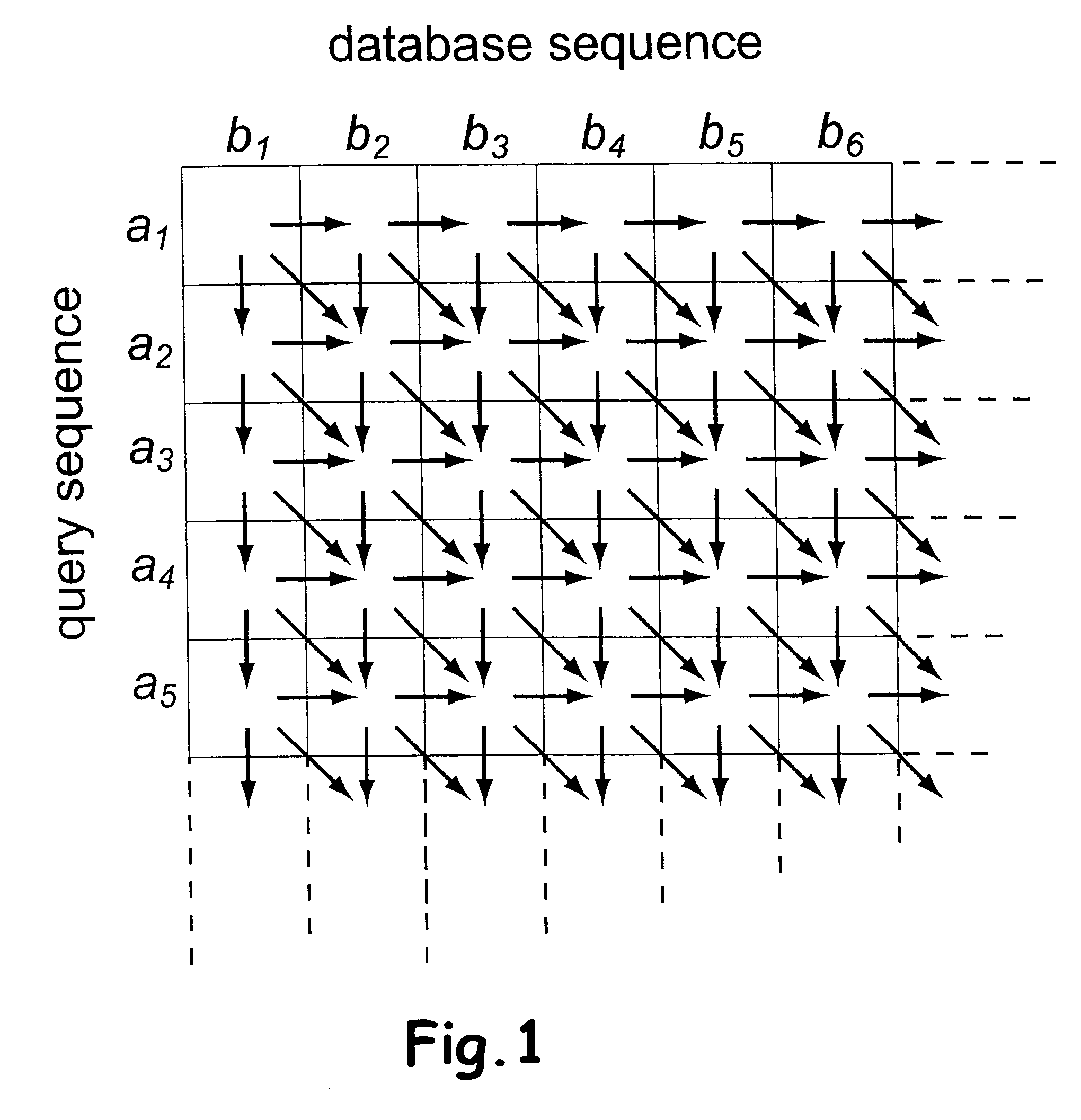Determination of optimal local sequence alignment similarity score
a local sequence and similarity score technology, applied in the direction of instruments, biochemistry apparatus and processes, material analysis, etc., can solve the problems of increasing the number of expensive computers, increasing the number of times or increasing the number of times to search the entire database, and the search using the optimal algorithm is unfortunately quite slow on ordinary computers
- Summary
- Abstract
- Description
- Claims
- Application Information
AI Technical Summary
Problems solved by technology
Method used
Image
Examples
Embodiment Construction
[0038] The preferred embodiment will be described with reference to the drawings. For each sequence in the database, a sequence similarity-searching program computes an alignment score that represent the degree of similarity between the query sequence and the database sequence. By also taking the length and composition of the query and database sequences into account, a statistical parameter can be computed and used to rank the database sequences in order of similarity to the query sequence. The raw alignment score is based on a substitution score matrix, (e.g. BLOSUM62), representing the similarity between two symbols, and an affined gap penalty function based on a gap open and a gap extension penalty.
[0039] In the following description vectors of 8 elements are used with 8 bits each, totalling 64 bits. However, this is only for the ease of description. Many other combinations of vector and element sizes are possible and can easily be generalised from the description below. Any num...
PUM
| Property | Measurement | Unit |
|---|---|---|
| length | aaaaa | aaaaa |
| size | aaaaa | aaaaa |
| time | aaaaa | aaaaa |
Abstract
Description
Claims
Application Information
 Login to View More
Login to View More - R&D
- Intellectual Property
- Life Sciences
- Materials
- Tech Scout
- Unparalleled Data Quality
- Higher Quality Content
- 60% Fewer Hallucinations
Browse by: Latest US Patents, China's latest patents, Technical Efficacy Thesaurus, Application Domain, Technology Topic, Popular Technical Reports.
© 2025 PatSnap. All rights reserved.Legal|Privacy policy|Modern Slavery Act Transparency Statement|Sitemap|About US| Contact US: help@patsnap.com



